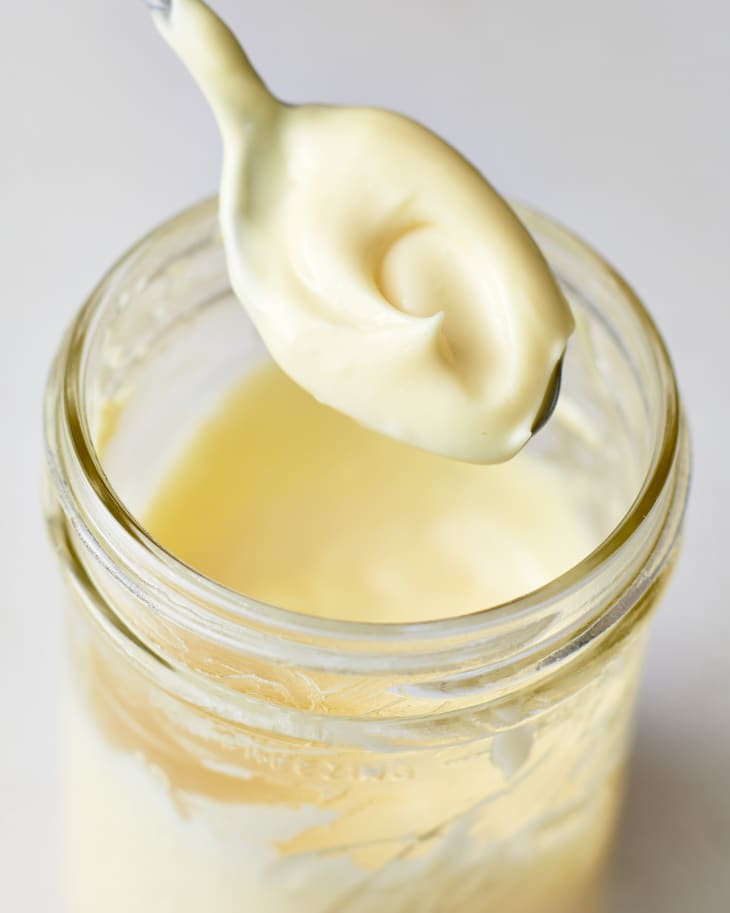Here’s Why Chefs Are Obsessed with This Japanese Mayo
People have lots of opinions about mayonnaise, which is perhaps the most divisive condiment there is. Many Americans can’t stand it; others can’t live without it. And then, of course, there’s the debate over which mayonnaise brand is best. Hellmann’s or Heinz? Kraft or Duke’s?
But there’s only one mayonnaise that has garnered a passionate following among chefs around the world: Kewpie mayonnaise, the umami-rich Japanese mayo that comes in an unmistakable red and white checkered bottle that’s decorated with an image of the iconic Kewpie baby. It’s tangy, rich, and salty-sweet, with a secret ingredient not found in most American mayos.
Momofuku’s David Chang (who also hosts the Netflix show Ugly Delicious) once told Food & Wine that Kewpie was “the best mayonnaise in the world.” Jason Halverson, former chef of Stones Throw in San Francisco, prizes Kewpie for being a “hidden go-to ingredient.” Chef Niki Nakayama of n/naka in Los Angeles (who also appeared on the first season of Chef’s Table) says she always has Kewpie in her fridge.
What Makes Kewpie Mayo So Special?
There are a few key factors that make Kewpie mayo different than regular mayo. Instead of whole eggs, only egg yolks are utilized to make Kewpie, which helps make it smoother and creamier. And rice vinegar is used in place of distilled vinegar. Vegetable oil is added too, but the essential ingredient in Kewpie is monosodium glutamate, or MSG, the flavor enhancer that brings a burst of delicious umami flavor to whatever it’s added to.
How Are Chefs Using Kewpie Mayo in the Kitchen?
Kewpie mayo has long been adored in Japan, where last year “mayonnaise cafés” opened to highlight dishes dedicated to celebrating the cult mayo. Here in the States, chefs use the super-savory mayo in both expected and exciting ways to boost the flavor and umami of their dishes.
At Nunu, a new Japanese bar in Philadelphia, chef Ben Puchowitz uses Kewpie mayo in place of regular mayo in the cabbage slaw that tops katsu sandos. In Nashville, chef Sarah Gavigan of Otaku Ramen adds Kewpie mayo along with smoked miso into the spice mix for the fried chicken used in her hot chicken buns. At Stones Throw, Halverson used to use Kewpie mayo in a secret sauce on burgers, and as a binder in tater tots. In Washington, D.C., Bar Charley’s sweet and spicy Korean BBQ wings are served with dots of Kewpie mayo. And the creamy sauce you find zigzagged back and forth across sushi rolls around the country is likely to be — you guessed it — Kewpie mayo.
How Can I Use It at Home?
You can use Kewpie mayo when you cook at home, too. (Many grocery stores carry Kewpie, but if you can’t find it on shelves you can order it online from Amazon.) Use it just like regular mayo — spread on sandwiches, as a dip for fries, or in potato, egg, tuna, or chicken salads. The versatile sauce can also be used in less obvious ways, like in a homemade Caesar dressing, in marinades and glazes for meat, or, if you dare, on a bagel with smoked salmon for breakfast. Just be sure to use it sparingly, as it really does bring a bigger punch of sweet and salty flavors than regular mayo.
